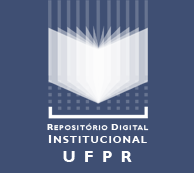UTILIZAÇÃO DA TÉCNICA DA ESPECTROFOTOMETRIA DE REFLECTÂNCIA NO INFRAVERMELHO PROXIMAL NA PREDIÇÃO DA COMPOSIÇÃO QUÍMICA DE UMA PASTAGEM CONSORCIADA ENTRE GRAMÍNEA + LEGUMINOSAS
Resumo
A técnica da espectrofotometria de reflectância no infravermelho proximal (NIRS) tem demostrado ser uma técnica apta para predizer o valor nutritivo das forragens. Com o objetivo de avaliar o sistema de análise por infravermelho na predicação da MS, PB, FDA, FDN, Ca e P foi conduzido um experimento na região do Município de Guarapuava, Paraná - Brasil. Foram utilizadas 360 amostras em 6 cortes com intervalo entre cortes de 61, 60, 57, 143 e 103 dias, e uma altura de corte de 5 cm durante o período de 1 ano. As amostras são compostas de Lolium multiflorum, Trifolium repens, Trifolium pratense, Trifolum vesiculosum, e Lotus corniculatus no inverno e pasto nativo no verão. As amostras foram secas em estufa com ar forçado a 60º C e moídas em moinho Willey em peneira de 1 mm. O espectro de absorção das amostras foi obtido através de um aparelho NR 4500 com monocromador na NIRSystems e o sinal foi digitalizado e gravado na forma de log (1/R). Foram selecionadas para calibração um total de 27, 31, 30, 29, 29, 29 amostras e, após feita a calibração, os coeficientes de regressão (R2) para as frações MS, PB, FDA, FDN, Ca e P foram respectivamente: 0,92; 0,92; 093; 0,97; 0,49; 0,64 e um erro padrão de calibração de respectivamente 1,67; 0,58; 1,52; 1,15; 0,10; 0,03. Com base nos valores acima descritos se conclui que com a utilização do NIRS pode-se predizer de forma aceitável o valor nutritivo das forragens descritas neste experimento.
Texto completo:
PDF (English)DOI: http://dx.doi.org/10.5380/rsa.v1i1.998




